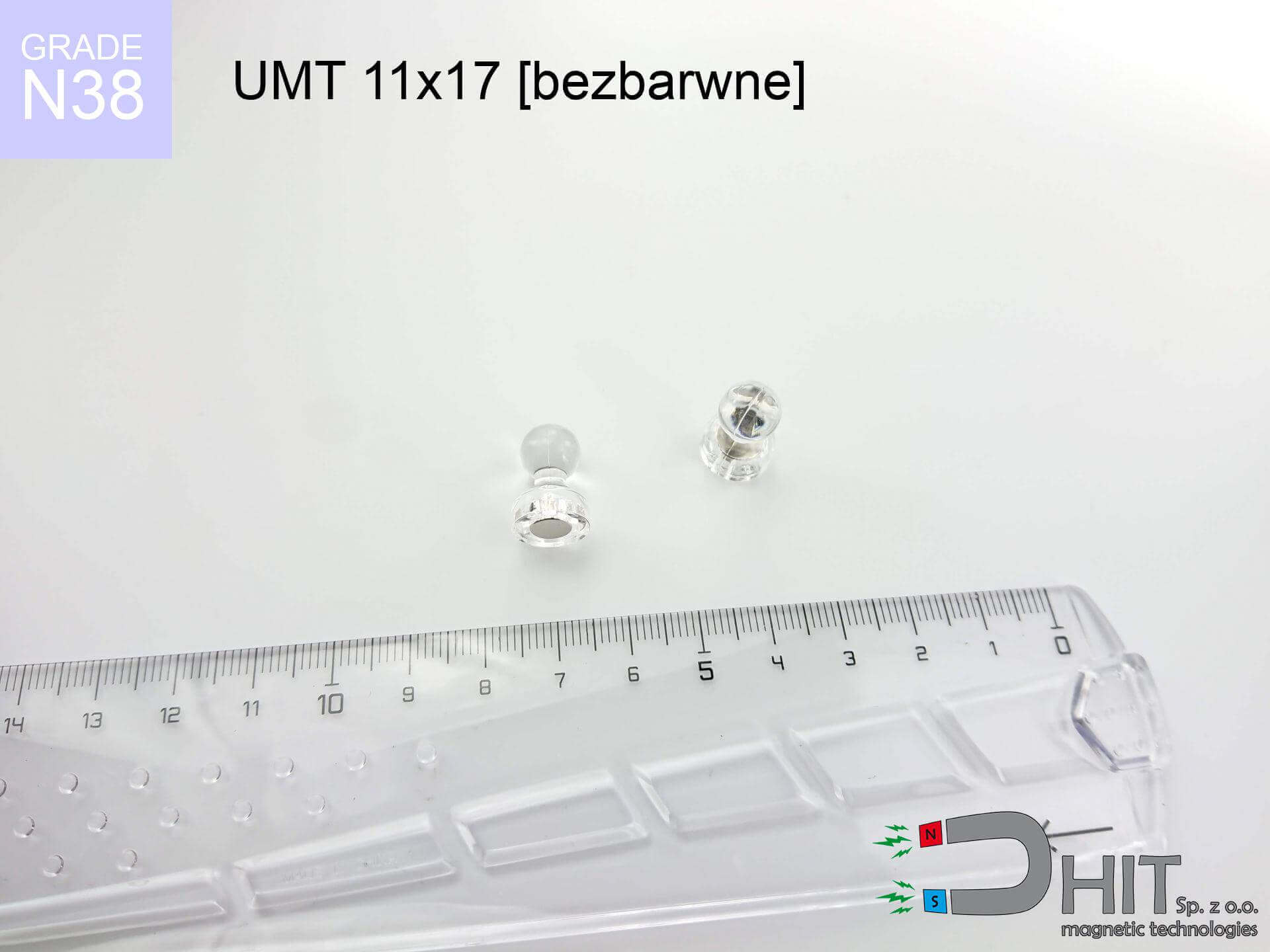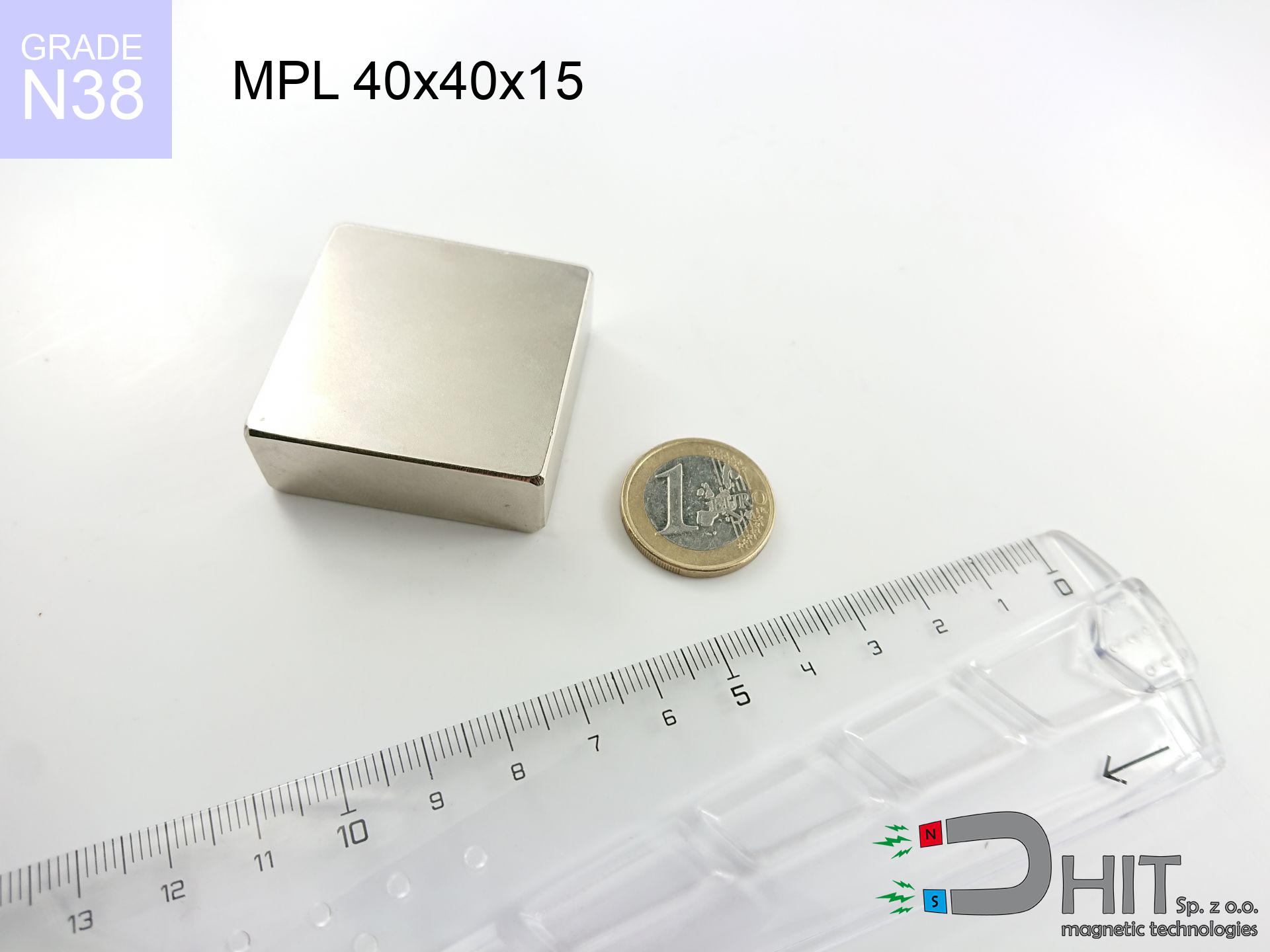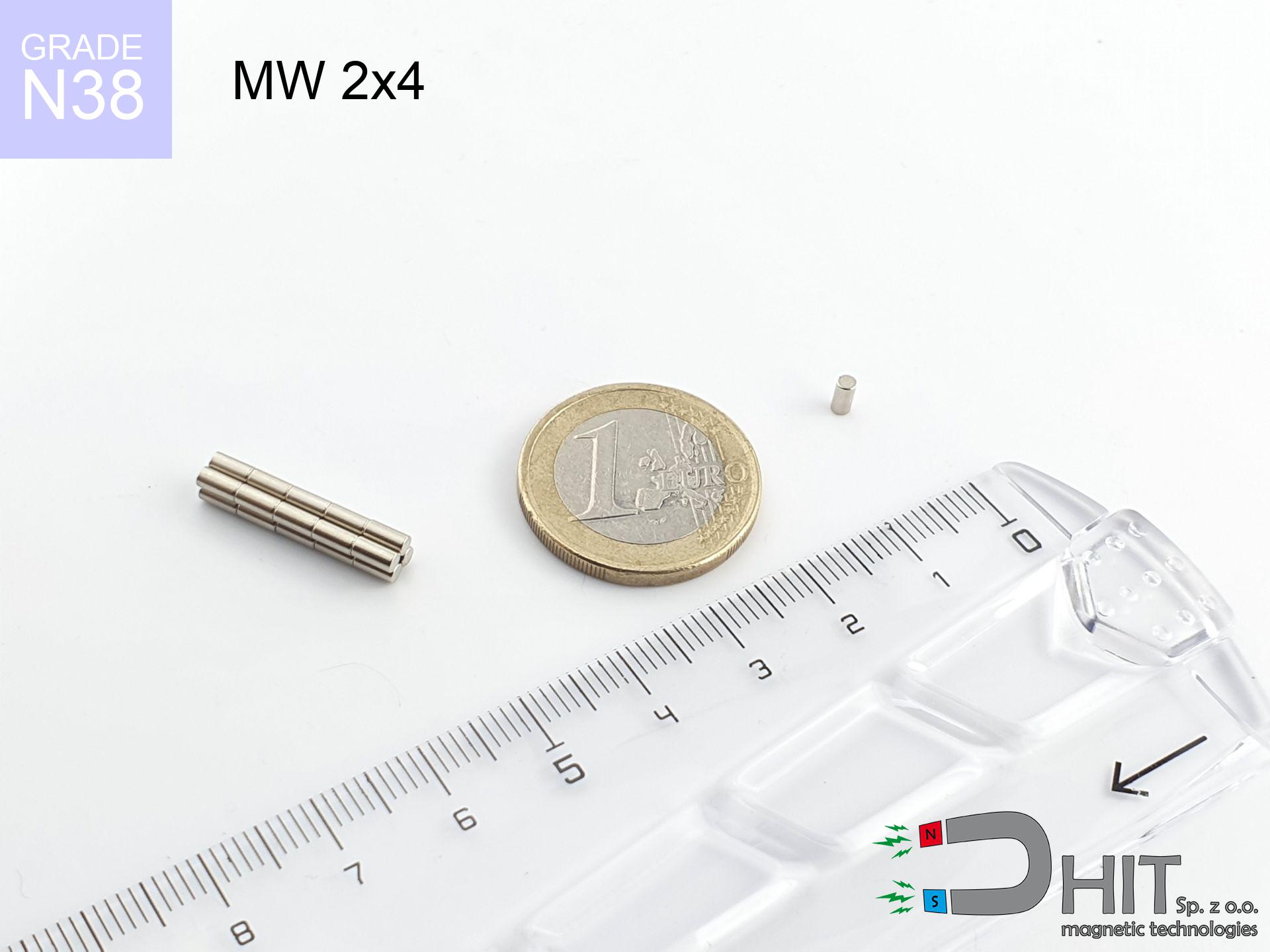UMT 11x17 colorless / N38 - board holder
board holder
Catalog no 230266
GTIN/EAN: 5906301814290
Diameter Ø
11 mm [±1 mm]
Height
17 mm [±1 mm]
Weight
3 g
Coating
[NiCuNi] Nickel
1.538 ZŁ with VAT / pcs + price for transport
1.250 ZŁ net + 23% VAT / pcs
bulk discounts:
Need more?
Call us
+48 888 99 98 98
or get in touch via
form
the contact section.
Weight along with structure of magnets can be calculated on our
online calculation tool.
Order by 14:00 and we’ll ship today!
Technical - UMT 11x17 colorless / N38 - board holder
Specification / characteristics - UMT 11x17 colorless / N38 - board holder
| properties | values |
|---|---|
| Cat. no. | 230266 |
| GTIN/EAN | 5906301814290 |
| Production/Distribution | Dhit sp. z o.o. |
| Country of origin | Poland / China / Germany |
| Customs code | 85059029 |
| Diameter Ø | 11 mm [±1 mm] |
| Height | 17 mm [±1 mm] |
| Weight | 3 g |
| Coating | [NiCuNi] Nickel |
| Manufacturing Tolerance | ±1 mm |
Magnetic properties of material N38
| properties | values | units |
|---|---|---|
| remenance Br [min. - max.] ? | 12.2-12.6 | kGs |
| remenance Br [min. - max.] ? | 1220-1260 | mT |
| coercivity bHc ? | 10.8-11.5 | kOe |
| coercivity bHc ? | 860-915 | kA/m |
| actual internal force iHc | ≥ 12 | kOe |
| actual internal force iHc | ≥ 955 | kA/m |
| energy density [min. - max.] ? | 36-38 | BH max MGOe |
| energy density [min. - max.] ? | 287-303 | BH max KJ/m |
| max. temperature ? | ≤ 80 | °C |
Physical properties of sintered neodymium magnets Nd2Fe14B at 20°C
| properties | values | units |
|---|---|---|
| Vickers hardness | ≥550 | Hv |
| Density | ≥7.4 | g/cm3 |
| Curie Temperature TC | 312 - 380 | °C |
| Curie Temperature TF | 593 - 716 | °F |
| Specific resistance | 150 | μΩ⋅cm |
| Bending strength | 250 | MPa |
| Compressive strength | 1000~1100 | MPa |
| Thermal expansion parallel (∥) to orientation (M) | (3-4) x 10-6 | °C-1 |
| Thermal expansion perpendicular (⊥) to orientation (M) | -(1-3) x 10-6 | °C-1 |
| Young's modulus | 1.7 x 104 | kg/mm² |
Chemical composition
| iron (Fe) | 64% – 68% |
| neodymium (Nd) | 29% – 32% |
| boron (B) | 1.1% – 1.2% |
| dysprosium (Dy) | 0.5% – 2.0% |
| coating (Ni-Cu-Ni) | < 0.05% |
Ecology and recycling (GPSR)
| recyclability (EoL) | 100% |
| recycled raw materials | ~10% (pre-cons) |
| carbon footprint | low / zredukowany |
| waste code (EWC) | 16 02 16 |
Other offers
Pros as well as cons of neodymium magnets.
Benefits
- They retain magnetic properties for almost 10 years – the drop is just ~1% (according to analyses),
- Neodymium magnets remain exceptionally resistant to magnetic field loss caused by external field sources,
- The use of an shiny finish of noble metals (nickel, gold, silver) causes the element to look better,
- Neodymium magnets ensure maximum magnetic induction on a their surface, which ensures high operational effectiveness,
- Through (adequate) combination of ingredients, they can achieve high thermal resistance, allowing for operation at temperatures reaching 230°C and above...
- Due to the possibility of flexible shaping and adaptation to custom solutions, magnetic components can be produced in a variety of forms and dimensions, which expands the range of possible applications,
- Fundamental importance in future technologies – they are utilized in data components, electric motors, advanced medical instruments, as well as technologically advanced constructions.
- Compactness – despite small sizes they generate large force, making them ideal for precision applications
Weaknesses
- Susceptibility to cracking is one of their disadvantages. Upon strong impact they can break. We advise keeping them in a special holder, which not only secures them against impacts but also raises their durability
- We warn that neodymium magnets can reduce their power at high temperatures. To prevent this, we recommend our specialized [AH] magnets, which work effectively even at 230°C.
- Due to the susceptibility of magnets to corrosion in a humid environment, we recommend using waterproof magnets made of rubber, plastic or other material resistant to moisture, in case of application outdoors
- Due to limitations in creating nuts and complicated forms in magnets, we recommend using cover - magnetic holder.
- Possible danger related to microscopic parts of magnets can be dangerous, in case of ingestion, which is particularly important in the aspect of protecting the youngest. Additionally, small elements of these magnets can be problematic in diagnostics medical in case of swallowing.
- High unit price – neodymium magnets cost more than other types of magnets (e.g. ferrite), which can limit application in large quantities
Pull force analysis
Best holding force of the magnet in ideal parameters – what contributes to it?
- with the contact of a sheet made of special test steel, guaranteeing maximum field concentration
- possessing a thickness of at least 10 mm to ensure full flux closure
- with an ideally smooth contact surface
- under conditions of gap-free contact (metal-to-metal)
- for force acting at a right angle (pull-off, not shear)
- at room temperature
Practical aspects of lifting capacity – factors
- Clearance – existence of any layer (rust, dirt, gap) acts as an insulator, which reduces capacity rapidly (even by 50% at 0.5 mm).
- Force direction – declared lifting capacity refers to detachment vertically. When attempting to slide, the magnet holds much less (often approx. 20-30% of nominal force).
- Base massiveness – too thin steel causes magnetic saturation, causing part of the flux to be wasted to the other side.
- Steel grade – ideal substrate is high-permeability steel. Stainless steels may attract less.
- Smoothness – ideal contact is possible only on smooth steel. Any scratches and bumps reduce the real contact area, weakening the magnet.
- Thermal conditions – neodymium magnets have a negative temperature coefficient. At higher temperatures they lose power, and in frost they can be stronger (up to a certain limit).
Lifting capacity was assessed using a polished steel plate of optimal thickness (min. 20 mm), under vertically applied force, whereas under attempts to slide the magnet the holding force is lower. Moreover, even a small distance between the magnet and the plate reduces the load capacity.
Warnings
Product not for children
Neodymium magnets are not intended for children. Swallowing several magnets may result in them attracting across intestines, which constitutes a direct threat to life and necessitates immediate surgery.
Pacemakers
People with a pacemaker should maintain an large gap from magnets. The magnetism can stop the operation of the life-saving device.
Cards and drives
Avoid bringing magnets close to a purse, laptop, or TV. The magnetism can destroy these devices and wipe information from cards.
Sensitization to coating
Nickel alert: The Ni-Cu-Ni coating contains nickel. If an allergic reaction appears, immediately stop working with magnets and wear gloves.
Heat warning
Regular neodymium magnets (N-type) undergo demagnetization when the temperature surpasses 80°C. The loss of strength is permanent.
Combustion hazard
Fire hazard: Rare earth powder is explosive. Do not process magnets in home conditions as this risks ignition.
Phone sensors
Remember: rare earth magnets generate a field that confuses sensitive sensors. Keep a separation from your phone, tablet, and navigation systems.
Bodily injuries
Protect your hands. Two powerful magnets will join instantly with a force of several hundred kilograms, crushing everything in their path. Exercise extreme caution!
Safe operation
Before starting, check safety instructions. Sudden snapping can destroy the magnet or injure your hand. Think ahead.
Eye protection
NdFeB magnets are sintered ceramics, which means they are very brittle. Clashing of two magnets will cause them breaking into small pieces.



![SM 25x250 [2xM8] / N52 - magnetic separator SM 25x250 [2xM8] / N52 - magnetic separator](https://cdn3.dhit.pl/graphics/products/sm-25x250-2xm8-sam.jpg)
![SM 32x125 [2xM8] / N52 - magnetic separator SM 32x125 [2xM8] / N52 - magnetic separator](https://cdn3.dhit.pl/graphics/products/sm-32x125-2xm8-moj.jpg)



